About the Insurance Exam
Studying for the insurance exam can feel like information overload. With policies, regulations, and terms to remember, it’s easy to lose track of what you’ve learned. That’s where the right memory techniques come in. These strategies help break down complicated topics, making it easier for future insurance agents to lock in what they need to know.
Getting licensed is about more than just passing an exam. It’s about building confidence and truly understanding your material so you can feel prepared from day one. Whether you’re juggling a job, a family, or both, using smart memory methods makes studying a lot more manageable. Let’s take a look at how they help sharpen your focus and boost your ability to recall what matters most on exam day.
Understanding Memory Techniques
Memory techniques are simple methods used to help store and pull up information more easily. When you’re preparing for something as detailed as the insurance agent exam, these techniques are helpful tools to give your brain an edge. They let you study smarter instead of just longer by training you to interact with the material in new ways.
There are a few popular memory techniques that work especially well with this kind of content:
1. Visualization: turning facts into strong mental images
2. Mnemonics: making up easy-to-remember phrases or acronyms
3. Association: connecting new facts with things you already know
Each of these works a little differently, but they all share one goal: to take dry facts and make them easier to digest. Instead of rereading notes over and over again, you interact with your study material in a personal way. That kind of connection helps the ideas stick better in your mind.
For someone preparing for the insurance exam, these strategies can make a big difference. Not only do they help with recalling details during the test, but they also improve how you relate to the material long term. When you make studying more engaging, you also build stronger habits that carry into your future career.
Visualization Strategies
Visualization is about turning ideas into pictures in your mind. This helps because our brains usually remember images better than words. When you’re dealing with long lists or detailed regulations, turning those facts into visual stories helps you lock it all in.
Let’s say you’re trying to remember the parts of a homeowner’s insurance policy. Instead of repeating the list over and over, picture a house. In that house, imagine different rooms representing each section of the policy. The living room might be liability coverage. The kitchen? Property damage. When you recall the layout of that mental house, the sections come back to you a lot faster than just reading a list.
Here are a few tips for using visualization effectively while studying:
– Use strong, personal imagery. The more the image means to you, the more likely you are to remember it.
– Keep it simple. Don’t overcomplicate the image or it might distract you.
– Practice drawing out what you see. Sketching even quick visuals strengthens memory.
Visualization should feel like a study tool, not a chore. The more you use it, the better you’ll get at creating images that help you recall the kind of detailed facts the exam tests on.
Using Mnemonics for Exam Prep
Mnemonics are memory tools that take complex terms or long lists and turn them into patterns that are easier to remember. They do this by linking new information to simple, familiar forms like phrases, rhymes, or letters. No matter the state, insurance exam prep is full of detailed terms, so mnemonics can help move you through tricky topics quicker.
Say you’re trying to remember the types of insurance: life, health, property, and casualty. Instead of memorizing the full list word-for-word, you use the first letter of each to create a phrase like “Little Happy Puppies Cook.” It sounds goofy, and that’s part of the point. The more unusual the phrase, the more it sticks in your memory. “Roy G. Biv” for colors of the rainbow and making an L with your left thumb and forefinger to tell right from left are some examples of mnemonics that we’ve all likely used at one time or another. (Or perhaps, still do!)
Try some of these ideas to build your own mnemonics:
– Break down big ideas into short, sorted lists so you can turn them into acronyms.
– Use rhymes to attach a rhythm to what you’re learning.
– Flip hard terms into questions where the answers live inside your phrases.
– Put together flashcards with your unique mnemonic on one side and the full meaning on the other.
Creating your own mnemonics often works better than using ones you find elsewhere. Since they come from your own mind, the connection is more personal and easier to recall when it counts. Mnemonics turn dry topics into lighter, more memorable bits of info. Very Well Health has a great article on different types of mnemonics and examples that might help you create your own.
Making Information Stick with Associations
When you create associations, you link new knowledge to something you already understand. This makes facts easier to remember by giving them context that feels more rooted in your daily life. Insurance exam prep often includes tricky terms and legal rules, but associations can turn those into mental shortcuts.
Take the term “limits of liability.” You might connect it to a speed limit sign. Just like a sign controls how fast you’re allowed to go, a liability limit caps what the insurance company will pay. That connection makes the meaning easier to grasp and harder to forget.
Here are a few ways to make associations work for you:
– Compare insurance terms with regular items like cars, tools, or rooms in your home.
– Attach policies or ideas to people you know. Maybe your careful uncle represents an underwriter.
– Create simple stories that link one idea to another in a chain of thoughts.
– Match new ideas to familiar school subjects or jobs you’ve had in the past.
The more you work on these types of mental links, the better your study sessions will be. Over time, pulling up a fact becomes faster and more natural, like picking up a labeled folder from a clean desk instead of going through a messy drawer.
Build Your Best Study Strategy
Getting ready for the insurance exam doesn’t have to be stressful. Adding memory techniques like visualization, mnemonics, and associations to your study habits makes a big difference. These tools help you understand and hold onto new concepts, all while making your prep time more active and less frustrating.
Everyone learns differently, and sometimes you need something more than just reading notes or listening to lectures. These memory tricks work by helping you think with the material instead of just looking at it. That simple shift can change how effective your study plan is.
Whether this is your first time preparing for the exam or you’re reviewing and trying again, these memory methods can help speed up your progress. Success in becoming a licensed insurance agent starts with smart, active study choices that turn knowledge into confidence.
Feeling ready to take your insurance career to the next level? Enhance your strategy by integrating these memory techniques into your routine. For more tailored solutions to kickstart your insurance agent exam prep, explore how All-Lines Training can support your journey with comprehensive courses and resources. Start today and move closer to achieving your goals with confidence.



